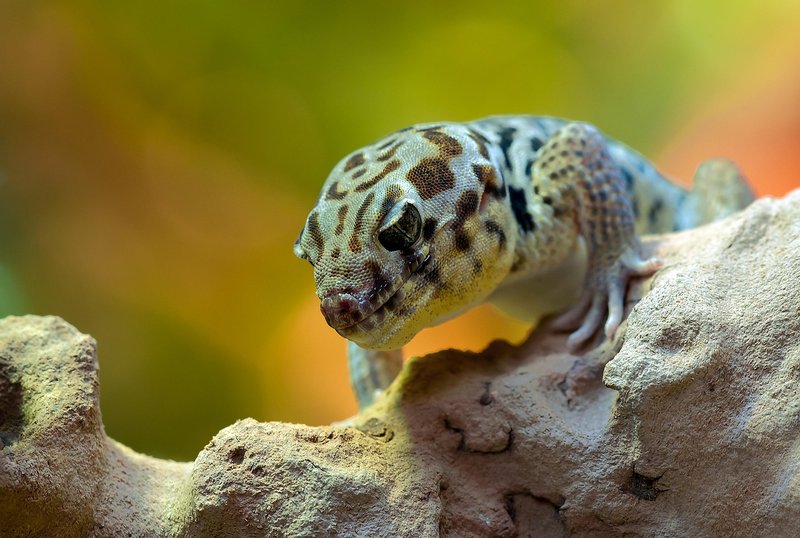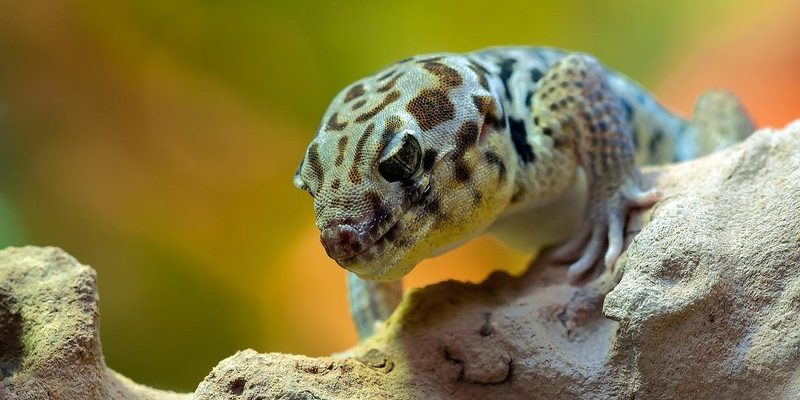
The Uluguru Gecko is not just any lizard; it’s a vibrant gem of the reptile world. Found primarily in the lush Uluguru Mountains of Tanzania, this little creature captures the imagination with its stunning colors and fascinating behaviors. Imagine stumbling upon a tiny, lively creature that seems to embody the essence of its tropical forest home—bright, bold, and a little mysterious. That’s exactly what the Uluguru Gecko delivers.
You might be wondering what makes the Uluguru Gecko so special. For starters, these geckos are known for their exceptional adaptability to their environment. They thrive in the dense foliage of the mountains, where they showcase a range of striking colors that help them blend in beautifully. With their charming yet elusive nature, Uluguru Geckos have become a topic of interest for both enthusiasts and researchers alike.
Physical Characteristics
The appearance of the Uluguru Gecko is nothing short of captivating. Typically, they have smooth, shiny skin that can present a variety of colors, including vibrant greens, browns, and even hints of blue or yellow. This colorful display is not just for show; it serves as an excellent camouflage against the leaves and bark of their habitat, providing them with protection from predators.
On average, adult Uluguru Geckos can reach lengths of about 10 to 12 centimeters, making them relatively small compared to other reptiles. Despite their size, they are agile and quick, darting through branches and leaves with remarkable skill. Their large, expressive eyes add to their endearing appearance and are crucial for spotting both prey and predators.
One of the standout features of these geckos is their adhesive toe pads. These pads allow them to climb effortlessly up vertical surfaces or even hang upside down. They are nature’s little acrobats, navigating their arboreal domain with ease and grace. This unique trait makes the Uluguru Gecko a fascinating subject for anyone interested in animal adaptations.
Habitat and Distribution
As their name suggests, Uluguru Geckos are endemic to the Uluguru Mountains, located in Tanzania. These mountains are part of the Eastern Arc Mountain range, known for their rich biodiversity and unique ecosystems. The geckos thrive in the lush, humid forests that blanket these mountainous regions. The combination of dense vegetation, ample hiding spots, and a warm climate makes for an ideal habitat.
Within this specific locale, the Uluguru Gecko can often be found resting on tree trunks or among the foliage, where they blend seamlessly into the environment. They are mostly arboreal, which means they spend the majority of their time in trees, away from ground-level predators. This preference for height not only provides safety but also access to food sources, like insects and other small invertebrates.
Unfortunately, the habitat of the Uluguru Gecko is under threat due to deforestation and agricultural expansion. As humans encroach on their territory, these geckos face increasing challenges. Conservation efforts are essential to protect not just the Uluguru Gecko but the entire ecosystem they inhabit. Preservation of their home is a step towards ensuring their survival.
Diet and Feeding Habits
The Uluguru Gecko is primarily insectivorous, which means their diet consists mainly of insects. These little hunters are skilled at catching their prey, which typically includes a variety of insects like crickets, beetles, and moths. Their keen eyesight plays a significant role in their ability to spot movement among the leaves and branches.
One interesting aspect of their feeding behavior is their hunting technique. Uluguru Geckos are known to be ambush predators, waiting patiently for unsuspecting insects to wander too close. With a quick flick of their tongue, they catch their meal, showcasing a remarkable precision that’s both fascinating and efficient.
In addition to insects, they might occasionally consume small fruits or nectar, which can provide extra nutrients. This omnivorous tendency allows them to adapt to varying food availability depending on the season. Their flexible diet further enhances their survival prospects in the wild.
Behavior and Social Structure
When it comes to behavior, Uluguru Geckos are quite territorial, especially males, who often display vibrant colors and engage in displays of strength to attract females during mating season. These displays are not only for attracting mates but also for warding off rival males. The vibrant coloration can fluctuate based on their mood and health, which adds another layer of complexity to their social interactions.
These geckos are primarily nocturnal, coming to life under the cover of darkness. During the day, they remain hidden, blending in with their surroundings to avoid predators. At night, they emerge to feed and engage in social behaviors, making the most of the cooler temperatures. This nocturnal lifestyle also allows them to hunt insects that are more active after sunset.
In terms of communication, Uluguru Geckos use a mix of visual signals and vocalizations. They have a range of calls that they use during mating rituals or when warning others of danger. These sounds can vary from subtle clicks to more pronounced chirps, showcasing the complexity of their social interactions.
Conservation Status
The Uluguru Gecko is currently categorized as a species of concern due to habitat loss and fragmentation. As the forests of the Uluguru Mountains are cut down for agriculture and urban development, the geckos find themselves losing their homes and food sources. This loss can lead to a decrease in their populations, making conservation efforts increasingly important.
Several organizations are actively working to preserve the unique biodiversity of the Uluguru region. Initiatives include reforestation projects, community education about the importance of conservation, and protected area designations. By fostering awareness and involvement among local communities, these efforts aim to ensure that the Uluguru Gecko and its habitat can thrive for generations to come.
It’s crucial for wildlife enthusiasts, researchers, and the general public to support these conservation initiatives. Every little effort counts, whether it’s participating in local clean-up events, advocating for policies that protect natural habitats, or simply spreading the word about the plight of the Uluguru Gecko.
Interesting Facts
- The Uluguru Gecko can change its color slightly based on its mood and environment, helping it blend in better.
- They are primarily active at night, which is a common trait among many gecko species.
- This species plays a vital role in controlling insect populations in their habitat.
- Uluguru Geckos have a unique way of communicating through visual signals and sounds.
- They are part of a rich ecosystem that contains many other endangered species.
FAQ
What is the lifespan of an Uluguru Gecko?
In the wild, Uluguru Geckos typically live around 5 to 10 years, depending on environmental factors and predation. In captivity, with proper care, they may live longer due to the absence of predators and access to a consistent food supply.
Are Uluguru Geckos good pets?
Uluguru Geckos can be kept as pets, but they require specific care and conditions to thrive. They need a humid environment, appropriate heat, and a diet rich in insects. Potential owners should do their research to ensure they can meet these needs.
How can I help in the conservation of the Uluguru Gecko?
You can help by supporting local conservation efforts, spreading awareness about the importance of preserving the Uluguru region, and practicing sustainable habits that protect wildlife habitats. Donations to trusted conservation organizations can also make a significant impact.
What threats do Uluguru Geckos face?
The primary threats to Uluguru Geckos include habitat destruction due to deforestation, agricultural expansion, and climate change. These factors contribute to the fragmentation of their environment, making survival increasingly challenging.
Can Uluguru Geckos be found outside Tanzania?
No, Uluguru Geckos are endemic to the Uluguru Mountains in Tanzania. They are not naturally found in any other regions, which makes their conservation all the more critical.
How do Uluguru Geckos regulate their body temperature?
Uluguru Geckos, like many reptiles, rely on their environment to regulate their body temperature. They bask in warm sunlight during the day and seek shade or cooler areas as needed, which helps them maintain optimal body temperatures for activity.
Do Uluguru Geckos have any natural predators?
Yes, Uluguru Geckos face threats from various predators, including birds, snakes, and larger mammals. Their ability to camouflage and their nocturnal habits help them avoid these dangers, but they are still at risk in their natural habitats.
What is their mating behavior like?
During mating season, male Uluguru Geckos become more vibrant and display their colors to attract females. They may engage in head-bobbing and other visual displays to assert their dominance and attract potential mates.
How do Uluguru Geckos adapt to their environment?
Uluguru Geckos have evolved several adaptations, including their color-changing skin for camouflage and adhesive toe pads for climbing. These traits help them survive in their mountainous, tropical habitat.
Is it legal to own an Uluguru Gecko as a pet?
The legality of owning an Uluguru Gecko varies by region and country, particularly due to their status as an endangered species. It’s important to check local wildlife regulations and consider adopting species that are more commonly kept as pets.

